In our previous blog, we talked about How to Start Your Own Shrimp Farm. In this blog, we are going to discuss how to manage your farm, control the quality of your pond water, and keep your farm free from disease and predators. In our later blogs, we will also cover some valuable aspects of marketing, processing, and economic feasibility, so keep reading our blogs regularly. These are very important factors in successful aquaculture and fish farming, whether you are raising shrimp or any other type of fish in your home pond, or in commercial fish farms.
Managing Water Quality
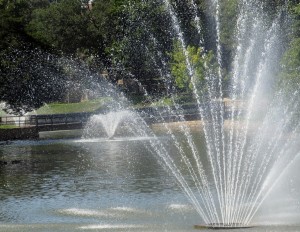 Keeping your water quality suitable for farmed fish is very important, whether you are farming , catfish, tilapia, or any other types of fish. You need to have a good flow of oxygen through aerators, keep water temperatures optimal, maintain a good pH balance, keep predators away, and keep water clean from weeds, germs, and diseases.
Keeping your water quality suitable for farmed fish is very important, whether you are farming , catfish, tilapia, or any other types of fish. You need to have a good flow of oxygen through aerators, keep water temperatures optimal, maintain a good pH balance, keep predators away, and keep water clean from weeds, germs, and diseases.
Aeration
The amount of oxygen dissolved in the water is very important. With proper levels of oxygen in the water, everything lives, and so, you need to have equipment to supply and monitor proper oxygen levels in the water. To test the oxygen levels in your pond, use an electronic oxygen meter, or a chemical oxygen level testing kit, based on the size of your farm. There are several methods you can use for the aeration for your pond. These include blowers, agitators, rotating wheels, air compressors, and fountains. The most sustainable methods of aeration could include solar powered rotating wheels that mix air into the water constantly. It would be a more energy efficient way. Shooting water into the air, using a water fountain or using a blower would use more energy and be less cost-effective. However, for home based fish farms, where a display is desirable, you could use a water fountain to make your pond attractive, and thus serving two purposes at the same time. Fountains also circulate the water of top layer without disturbing the cooler bottom layer.
Temperature control
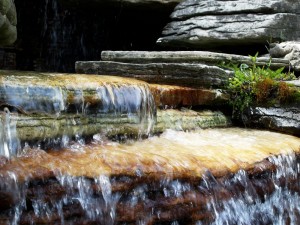 Keeping the water temperature at an optimum level is important, especially if your farm is located in a cooler region of the country. Most shrimp farms are located in warmer countries where shrimp is raised year round, and therefore, shrimp farming is suitable in the southern parts of the United States. Shrimps can be grown and raised easily from mid-April to November. Using a solar heater or solar heated greenhouses during the cold fall season can extend the growth of farmed fish. You may use an electric water heater for your home pond and circulate water throughout the pond for best results. Shrimps are warm water species, and the ideal temperature for growth of shrimp is between 57–84 °F.
Keeping the water temperature at an optimum level is important, especially if your farm is located in a cooler region of the country. Most shrimp farms are located in warmer countries where shrimp is raised year round, and therefore, shrimp farming is suitable in the southern parts of the United States. Shrimps can be grown and raised easily from mid-April to November. Using a solar heater or solar heated greenhouses during the cold fall season can extend the growth of farmed fish. You may use an electric water heater for your home pond and circulate water throughout the pond for best results. Shrimps are warm water species, and the ideal temperature for growth of shrimp is between 57–84 °F.
Nitrogen and toxicity control
Concentration of nitrogen and toxicity of the pond water needs to be kept at a lower level. Test samples from your pond periodically to ensure that nitrogen is kept at a safe level. A nitrogen level higher than 0.1 ppm would be harmful for the fish pond. A properly circulated pond would keep the nitrogen and ammonia levels low. It would also increase the biomass of shrimps at harvest.
pH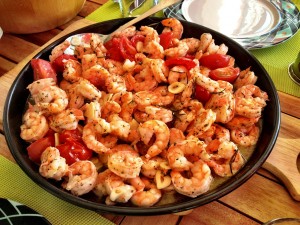
A high pH level would increase the mortality rate of shrimps. It would also mean a higher rate of ammonia in the water. The pH level should be kept between to 6.5 and 9.5; a higher pH would mean that un-ionized toxic ammonia is present in the water. A lower pH would indicate acidic water, which would also kill your fish. A dense algae bloom would cause higher pH levels in the water. Limiting algae growth would eliminate higher alkaline levels from being present in the water. Adding limestone to the pond would minimize formation of acidic water in the pond.
Controlling algae
To get rid of algae, use eco-friendly methods to control weeds. Make sure that the method you use is safe for your shrimps. Test your herbicides first before applying it to the pond. Put several of your shrimps in a plastic bucket and add some pond water. Test to see if the concentration of the herbicide is safe to use.
Predator control
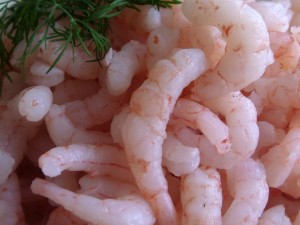 Certain kinds of birds, mammals, reptiles, fish, and birds can become predators for your shrimp farm. If your farm is in the wild, extending over a large area, it could attract a wide variety of wildlife and predators. Birds and animals will also try to find foraging opportunities from your pond. Use proper fencing to keep most crawling predators and reptiles out. Some birds feed on weak or diseased fish, whose impacts are minor. However, it is important that you remove any dead bodies from the pond, or it will attract more birds and disease. Birds and animals can also spread diseases by carrying pathogens in their stomach and fecal matter. They are also responsible for spreading parasites and other diseases. Fish farmers must be aware of predator control methods concerning endangered species. Water Snakes are also harmful for shrimp farming as they directly feed on shrimps. Remove all harmful predatory fish and reptiles before adding juvenile shrimps to your pond and remove any unwanted species from the pond. Use a nonlethal, non toxic method of predator control.
Certain kinds of birds, mammals, reptiles, fish, and birds can become predators for your shrimp farm. If your farm is in the wild, extending over a large area, it could attract a wide variety of wildlife and predators. Birds and animals will also try to find foraging opportunities from your pond. Use proper fencing to keep most crawling predators and reptiles out. Some birds feed on weak or diseased fish, whose impacts are minor. However, it is important that you remove any dead bodies from the pond, or it will attract more birds and disease. Birds and animals can also spread diseases by carrying pathogens in their stomach and fecal matter. They are also responsible for spreading parasites and other diseases. Fish farmers must be aware of predator control methods concerning endangered species. Water Snakes are also harmful for shrimp farming as they directly feed on shrimps. Remove all harmful predatory fish and reptiles before adding juvenile shrimps to your pond and remove any unwanted species from the pond. Use a nonlethal, non toxic method of predator control.
Disease control
If you have been keeping your water clean, disease would not be a significant problem for your pond. However, one disease that seems to affect some farms is spots on the shells, caused by a bacterial infection. This disease breaks down the outer skeleton of the shrimps 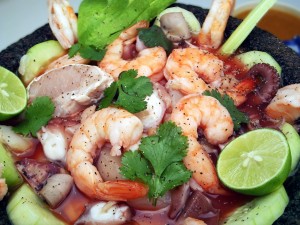 and eventually kills them. Algae and insect eggs may also be present on shells. Most of these diseases can be avoided by handling the infected shrimps carefully, and separating any infected shrimps before it becomes a serious problem.
and eventually kills them. Algae and insect eggs may also be present on shells. Most of these diseases can be avoided by handling the infected shrimps carefully, and separating any infected shrimps before it becomes a serious problem.
We hope you liked the information given here in this blog so far. Our next article will contain information on harvesting, marketing, and the economic aspects of fish farming, so please comeback soon. Until then, stay well, and we will be back with another blog on aquaculture and shrimp farming.
P.S: -Please add a comment in the comment box below and let us know your thoughts about this post. Please don’t hesitate to contact us with any questions or comments.
Source: WorldWide Aquaculture

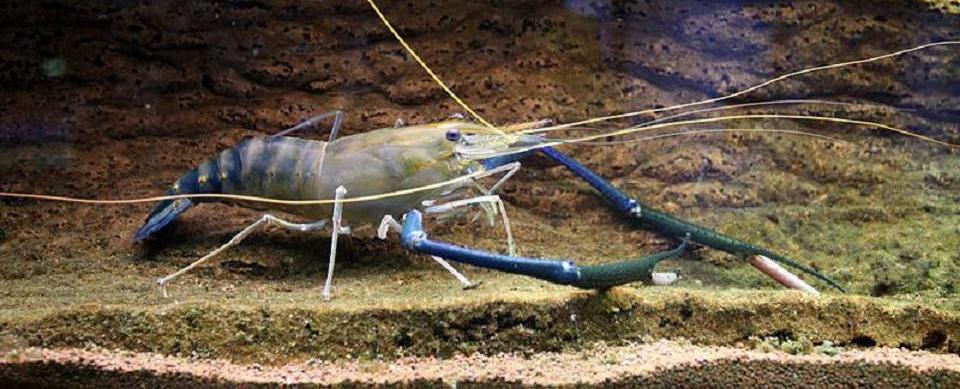


“tilapia or any other fish” – Well, tilapia is a slight exception insofar as it tolerates a wider variety of water qualities than other species, esp. most crustaceans. However, as with all “breathing” organism it is highly susceptible to nitrite and hypoxia. Which is why I advise using not just regular sampling, which may one day come too late, but constant monitoring of nitrite levels as a spike, like carbon monoxide poisoning in humans, can bring sudden death. And modern monitoring equipment based on microprocessors tends to become cheaper by the month, certainly cheaper than losing the fishes over night.
Thanks Darragh for sharing. We appreciate your comments. Please visit us regularly.Also do us a favor and tell your friends about us. Thanks.
Would you be interested in a environmentally safe method to maintain heat exchangers? Our technology is used in lobster and fish farms to eliminate bio-fouling in plate heat exchangers.
Thanks
Mike
Thanks for the information, I was looking into a new business and aquaculture has always intrigued me. If you have ideas on where I can pick up more literature on this subject I would appreciate it. Thanks Alan
Thanks Alan for your comment. Please keep reading our blogs. You could also give us a call at
303-495-3705 for more information.
I’m not quite sure how to say this; you made it exmertely easy for me!
Thanks, please visit us regularly and tell your friends.
I am quite fascinated with your materials on Shrimp farming. My interest has grown much deeper and i should be visiting you guys soon for more co-operation on shrimp business. Keep it up!
Thanks for your kind words. Please give us a call at 303-495-3705 to connect with us.
Having worked in sustainable agriculture for several years . I am quite curious about aquaculture . I would like to design a production process where the water is recirculated through a hydroponic vegetable area using the nutrients from the prawn waste to produce herbs for market cleansing the water which will be recirculated back to the prawn tanks within the greenhouse . Is this feasible . I am thinking of using plastic tanks or above ground swimming pools . What is a reasonable expectation of production in 500 gallon tanks and the amount of time between introducing the fry and harvest.Would it be advantageous to sterilize the returning water with ozone and ultraviolet light so that antibiotics would never be required .
Thanks
Garrett
Carrboro N.C.
27510
Please could you please let me know how many tons of scrimps and prawns can be harvested from an hectare. How many times in a year can one harvest?
Great question! We have an entire course designed for backyard aquaculture plus a free version at ceed.mykajabi.com with the Ecolonomic Action Team (EAT). Dr. Dorband has over 20 hours of lectures available with a membership. We also have free information available at aquaculturecentral.smartmember.com. These resources can more than answer your question and we hope to assist you in your aquaculture adventures.
Finally if you are very serious and want to get immediate help and consultation you can schedule a FREE call with us for a 30 min. consultation. This can be by skype if you are not in North America, or phone. You can schedule a time with us at http://www.talkwithwayne.com.
-The WWA Team
I am in Ghana, a tropical African country. I am a teacher but the salary is bad and so I want to go into shrimp farming. So I will be glad if you give me a video on how to start the farm. I will prefare the indoor one. I will appreciate it if you give me the guide. I know it will do well because we have wild ones. I will be happy if you help me with both the fresh water and marine one because I by an estuary where we catch shrimp during the raining season. I am very hopefully that if it is succesfull it will be a big business, ranging from training farmers, setting school for that where people could be trained in other protein source farms such as snail and mushroom, crab and other species. And can capture the west Africa and the whole Africa.I really need your help. So help me on how to start with the indoor ones so that if I an ok with it, then I go into the open air one. Help a soul to help other souls. Thank you.
John,
We certainly can help you with your aquaculture consulting needs. Here are several things we can do for you. First, we are going to make you a FREE member of our site where we teach courses and have live webinars about all kinds of aquaculture and agriculture. That site is called http://www.eatcommunity.com and you will get an email with login instructions.
Second, one of our staff will contact you and see about scheduling a brief FREE call or skype (for outside US) conversation. He will coordinate the timing for us.
Finally, on the http://www.eatcommunity.com site there is a questionnaire you should fill out to tell us a little about your aquaculture interests and needs. Please fill that out.
Areeb
Thanks for writing this awesome article. I’m a long time
reader but I’ve never been compelled to leave a comment.
I subscribed to your blog and shared this on my Facebook.
Thanks again for a great post!
So informative things are provided here,i really happy to read this post.This one is really looking one of the mind blowing post about impressive pond features.
Solar Pond Aerator
Thank you for sharing this information. A friend of mine was willing to do fish farming business. I will recommend him to read this blog. Very helpful.
Solar Pond Aeration
Thanks for the tips for pond digging. The shelves in the pond are so important to build the pond properly and structurally. Great advice.
Rocking Piston Compressors
I’ve found something that helped me. I really appreciate and details of this post. Thanks for sharing and thank you so much for the installation tips!
Pheasants Forever Branded Windmills
I am genuinely glad to glance at this website posts which includes plenty of useful data,
thanks for providing these kinds of information.
Very rapidly this web page will be famous amid all blog visitors,
due to it’s pleasant articles or reviews
Right here is the right site for anyone who would like to understand this topic.
You know a whole lot its almost tough to argue with you (not that I personally will need to…HaHa).
You certainly put a brand new spin on a topic that’s been discussed for ages.
Excellent stuff, just excellent!
This excellent website ccertainly has all oof the information I needed concerning this subject and didn’t
know who to ask.
Wonderful blog! Do you have any suggestions for aspiring writers?
I’m hoping to start my own website soon but I’m a little lost on everything.
Would you suggest starting with a free platform like WordPress or go for a paid option? There are so
many options out there that I’m completely overwhelmed
.. Any ideas? Bless you!
The issue with these incidents in Pocatello and also around the nation, iss tgat these
charges usually cost citizens off time work for either a visit to jail,
or time fighting the phony charges in court, and more frequently than not these charges do not carry any
legal authority to start with, but police have a golden tickett that they are pedmitted to be ignorant of the law, despite the
ignorance of the law is no excuse ffor citizens.
Hi colleagues, how is everything, and what you desire to say on the
topic of this post, in my view its really remarkable in support of me.
This piece of writing will help the internet people for creating
new weblog or even a weblog from start to end.
Right here is the right website for everyone who wishes to understand this topic.
You realize so much its almost tough to argue with you (not that I actually will need to…HaHa).
You definitely put a brand new spin on a subject that’s been discussed for a long time.
Excellent stuff, just wonderful!
Hi there all, here every person is sharing these kinds of experience,
so it’s pleasant to read this website, and I used to pay
a quick visit this blog daily.
What’s up, the whole thing is going fine here and ofcourse every one
is sharing facts, that’s in fact good, keep up writing.
naturally like your web site but you need to test the spelling on several of your posts.
Many of them are rife with spelling issues and I in finding
it very troublesome to tell the truth then again I will surely come back again.
Nice post. I used to be checking continuously this blog
and I’m inspired! Extremely helpful information specifically
the closing section 🙂 I take care of such information a lot.
I used to be looking for this particular information for a very lengthy
time. Thanks and good luck.
I go to see each day a few websites and sites to read posts, however this website presents feature based writing.
Have you ever considered creating an ebook or
guest authoring on other sites? I have a blog based on the same
ideas you discuss and would love to have you share some stories/information. I know my readers would appreciate your
work. If you’re even remotely interested, feel free to shoot me an e-mail.
That is a good tip especially to those new to
the blogosphere. Simple but very accurate information… Appreciate your sharing this one.
A must read article!
Great blog! Do you have any tips and hints for aspiring writers?
I’m planning to start my own website soon but I’m a little
lost on everything. Would you recommend starting with a free platform like WordPress or go
for a paid option? There are so many choices out there that I’m completely confused ..
Any suggestions? Many thanks!
Great web site. Plenty of useful information here. I am sending it to several pals
ans also sharing in delicious. And obviously, thanks in your
sweat!
Can we raise both the milkfish and prawns in a pond.If do so please can you give us instructions.many thanks
Thanks for your comment! It’s so exciting to read your article and to know more about shrimp farming. I made sure to follow it. for more information http://www.asagriaqua.com/
whoah this blog is wonderful i llve reading your posts.
Stay up the good work! Yoou know, a lot of individuals are looking round for this information, you can help them greatly.
You state nitrogen needs to be ~ 0.1 ppm. I’ll assume this is measured as N (versus as NH3 or NO3 or urea).
Is this:
1)dissolved or total nitrogen (dissolved is usually bioavailable for plankton growth when in inorganic form)
2)organic or inorganic nitrogen (organic nitrogen is measured as TKN – NH3; inorganic nitrogen measured as NH3 and NO3+NO2)
Seems as though my experience as a water chemist seeing lake and stream data show low levels below 0.1 ppm of inorganic nitrogen when fairly clean but can be low in eutrophic systems due to algal growth especially when nitrogen is limiting. TKN detection limits are often 0.1 ppm and values below 0.5 ppm are usually in clean lakes/rivers often higher as total due to phytoplankton analyzed in the water sample.
Thanks for the input.
What i don’t understood is in fact how you’re now not actually much more neatly-preferred than you may be right now.
You are so intelligent. You realize therefore significantly in relation to this matter, made me individually imagine it from a lot of varied angles.
Its like women and men are not interested until it’s one thing to do with Lady gaga!
Your personal stuffs nice. All the time care for it up!